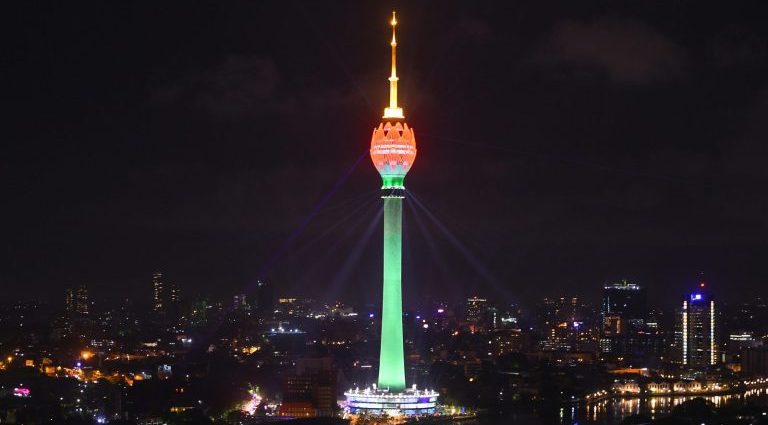
To a large extent, Sri Lanka’s economic crisis is an outcome of the nation’s reliance on creditor nations and multilateral agencies for managing its chronic fiscal and current-account deficits.
The country’s ratio of external debt to GDP has been above 50% for a long time. The debt structure is also fragile as short-term debt and private creditors who are susceptible to capital flight and interest-rate volatility account for 45% of the nation’s external debt.
Sri Lanka owes more than US$50 billion to countries such as China and Japan and to the World Bank. Sri Lanka had to pay $7 billion in external debt service this year, but it ran out of foreign exchange reserves to do so. This led to the country declaring that it is going to be defaulting on its external debt payments to the tune of $51 billion.
Earlier when Sri Lanka was classified as a low-income county by the World Bank, it received loans at very liberal conditions from multilateral agencies such as the Japan International Cooperation Agency (JICA), the Asian Development Bank (ADB) and the World Bank. These loans were provided at relatively low interest rates and the nation had to pay them back over a course of 25 to 40 years.
Sri Lanka’s worries related to external debt started in the 2000s when the World Bank upgraded the country’s classification from a low-income to a low-middle-income country. This restricted the nation’s access to concessionary funding.
Sri Lanka then shifted to accessing credit from the capital market through international sovereign bonds (ISBs) that had interest rates above 6% and had to be repaid in five to 10 years. Sri Lanka put out its first ISB in 2007, then went on to issue ISBs worth $18 billion in the 2007-19 period, making up 36.4% of Sri Lanka’s external debt.
ISBs and other financial instruments form more than 50% of Sri Lanka’s total foreign loans, resulting in macroeconomic instability.
Sri Lanka’s domestic public debt has remained stable, but the massive increase in the foreign debt-to-GDP ratio has caused the total ratio to reach a record 119 by 2022, while the best situation for emerging economies is 64% according to the World Bank. Any percentage-point increase beyond this will reduce the annual real growth of the economy by 0.02 percentage point.
Sri Lanka stuck to commercial borrowings without addressing the structural vulnerabilities of the domestic economy such as declining trade as a percentage of GDP and low inflows of foreign direct investment (FDI). Tax revenues have also been falling for several years, with then-president Gotabaya Rajapaksa’s steep tax cuts in 2019 being the final nail in the coffin.
Another issue is that Sri Lanka fell prey to China’s “debt-trap diplomacy.” The value of China’s share of Sri Lanka’s external debt may not be significant, but the hidden tricks that Beijing pulls as part of its loan agreements are often problematic and signal economic imperialism. For instance, Beijing mandates the use of digital yuan as a condition for forgiveness if any of the African nations cannot pay back its loans to China.
Bangladeshi Finance Minister A K Abdul Momen also recently pointed to the example of Sri Lanka to show how countries will be “thinking twice [before agreeing] to this project,” referring to China’s Belt and Road Initiative (BRI).
Sri Lanka has been asking China to explore debt restructuring options as well as extending a $2.5 billion loan. The United States Agency for International Development (USAID) has also asked China to help Sri Lanka with debt restructuring. But Beijing has still not issued any formal communication saying it has agreed to do anything in this regard.
Sri Lanka has also been using external financing to build infrastructure projects that rarely provide returns. These “white elephants” have been criticized as being vanity projects that have played a part in the economic crisis. The Lotus Tower project in Colombo financed by China is the latest example of this. India recently pointed out this shortcoming in Sri Lanka’s economy during the 51st session of the United Nations Human Rights Council.
The civil war that lasted from 1983 to 2009 crippled the economy, and the situation was worsened by the 2008 fiscal crisis. Commercial loans required debt servicing that the weakened economy could not handle. Sri Lanka has been asking creditors to restructure its debt. Japanese Minister of Finance Shunichi Suzuki stated that Japan will coordinate with other creditors, mainly India and China, to help Sri Lanka come out of the current crisis.
In many countries, the flow of sovereign capital promotes economic growth. But Sri Lanka has been using external debts to resolve its balance-of-payment problems. The International Monetary Fund has bailed out Sri Lanka almost 15 times, and it has agreed to do so again with a $2.9 billion credit.
The latest IMF loan is also expected to boost Sri Lanka’s credit rating, enabling it to pool credit from other international sources. But we have seen how the IMF loans have caused diminishing returns in the Sri Lankan economy, which shows that the nation needs urgent credit diversification and debt restructuring to escape from the current crisis and be resilient to external shocks in the future.
The author acknowledges Aravind J Nampoothiry at the National Law School of India University in Bangalore for his research assistance on this article.

